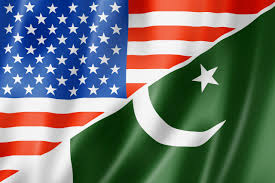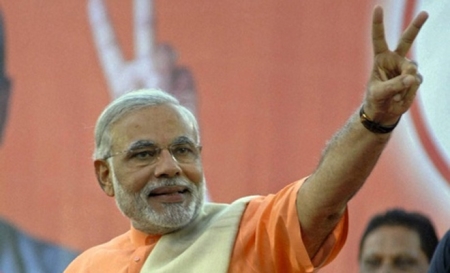Beyond Right and Left : Restoring India’s Dharmik School Of Social Thought – David Frowley From Indiafacts
भारत को पश्चिमी सभ्यता की भूल भुलैया से निकल कर अपनी पुराणी धार्मिक संस्कृति को ही अपनाना होगा. इसे विदेशी वाम या अन्य दृष्टि से नहीं बल्कि भारतीय पारंपरिक दृष्टिकोण से देखने की आवश्यकता है . अंग्रेज़ी मैं तो भारतीय धार्मिक भाषाओं को व्यक्त करने के लिए शब्द ही नहीं हैं . मार्क्सिस्म की धर्मविरोधी परम्परा का भारत मैं कोई उपयोग नहीं है . नेहरूजी ने विवेकानंद व् और्बिन्दो को भारतीय मानस से हटा कर एक भूल की थी. महात्मा गाँधी की राम राज्य की परिकल्पना देश के लिए अधिक उपयुक्त थी .
India needs to return to its traditional dharmic approach to political thought in order to take the country out of the quagmire created by following western political ideologies contrary to its deeper civilizational ethos.The effort to understand India’s political concerns according to usual ideas of right and left in the West is misleading. India’s dharmic approach cannot be defined according to the parameters of western thought as it reflects a very different foundation and goal.
India’s dharmic social and political philosophy is thousands of years older than the left or the right in the West. It possesses a well-defined terminology, literature, and concerns. Yet it is not frozen in time. It has its own evolutionary movement and ability to adapt to ongoing developments in civilization and technology. There is much in both left and right in the West that can be dharmic or adharmic. Dharmic categories cannot simply be identified with either, but can provide a helpful critique of both.
Politics, Values and Dharma
We cannot look at political concerns apart from cultural values. Both left and right in the West lack a spiritual or yogic vision, and are caught in an outer view of life that pursues material acquisition and personal fulfillment as the primary focus. Western ideologies of competition, consumption, markets, media and militarism follow a radically different orientation than dharmic traditions and their values of harmony, interdependence, introspection, respect for nature and cultural diversity.
Western political thought emphasizes human rights as its primary form of social idealism. But such rights are defined at an outer level relative to personal desires and ambitions. This individual/ego focus leads to self-assertion and isolation, leaving people spiritually empty within, and often in conflict outwardly as well.
Along with human rights, we must recognize the dharmic duties of the individual to society and to the whole of life. Without honoring dharma, a one-sided emphasis on human freedoms becomes divisive and destructive. Our highest human right is to work for the well-being of all, and direct to our lives to an inner spiritual goal beyond transient outer concerns.
Politics can easily become an adharmic pursuit, attracting those seeking domination, power and wealth, the asuric or rajasic type, the egoistic person in yogic thought. Political electioneering is based upon slogans and manipulating the fears and desires of the masses, which prevails even in democracies and media based politics, which allows such rajasic types to flourish.
Yet a dharmic approach to political thought is possible, if rooted in dharmic values and karma yoga, where the attitude of service and a lifestyle of simplicity prevails in the leaders. This would be a radical change from politics today, East or West.
The Problem of Language in India’s Political Discourse
A related problem is that India’s traditional political discourse has occurred in Sanskrit and in India’s native languages, rather than in English that dominates global discussions today. The English language today does not have equivalent terms to accurately translate India’s dharmic thought. This extends to all other western languages.
It is well known that the terms of India’s spiritual discourse have been subject to significant distortions by English renderings, such as dharma as religion, moksha as salvation, or Yoga as asana.
The same is true of India’s traditional social discourse. Some of these distortions like varna as caste have been quite misleading. We must recognize that just as the West does not have an appropriate vocabulary for Indian spiritual thought, it is also lacking in one for India’s social thought.
However, it is necessary to develop a terminology for India’s dharmic social thought that is meaningful in modern English in order to reach the global audience. This should include key untranslatable Sanskrit terms like the term dharma itself, much as how Vivekananda, Chinmayananda and Dayananda put Vedanta into a clear modern idiom of English with key Sanskrit terms to clarify its nuances. For this to occur, we should avoid describing India’s dharmic school of thought according to English terms of political debate today.
The Confusion of Left and Right in India
Right and left are the two main ways that politics has been defined in the western world for several centuries. Yet there are many degrees of right and left. The far left as in communism and the far right as in fascism become identical in terms of their violent action and their history of oppression.
 Western democracies like the United States are dominated by center left and center right parties not far removed from one another that usually alternate in power. Neither is an extreme party. Both embrace capitalism and democracy and allow some degree of social welfare. Both can be militaristic and nationalistic. The left-center generally encourages more social welfare than the right, which tends to favor business more, but such distinctions are easily outweighed by political expediency.
Western democracies like the United States are dominated by center left and center right parties not far removed from one another that usually alternate in power. Neither is an extreme party. Both embrace capitalism and democracy and allow some degree of social welfare. Both can be militaristic and nationalistic. The left-center generally encourages more social welfare than the right, which tends to favor business more, but such distinctions are easily outweighed by political expediency.
In India, left and right bear little resemblance to what is regarded as left and right in the West, adding to the confusion of terminology. The Indian left reflects the old far left in the West and promotes socialist and communist policies that failed in the twentieth century, with bureaucracy, corruption and state control that no western country would like to return to.
The Indian left does have a connection with the far left in the West, but along with it often criticizes left center parties like the American Democratic party as too conservative for them. Yet the Indian left, which still can admire Stalin, parades itself in the West as a form of democratic liberalism to gain sympathy, hiding its more extreme agenda, when expedient.
The so-called Indian right, meanwhile, is very different than the western right. While the western right is rooted in traditional western social and intellectual values, the so-called Indian right is rooted in traditional Indian values. This means that while the right in both the West and India are culturally conservative, they are conserving very different cultures. The Western right is often pro-Christian, promotes European culture and retains certain colonial biases.
Both the Indian right and western right have more in common relative to economic policies, such as promoting economic liberalization and free markets, as distinct from the state control policies of the left. Yet the Indian right like the BJP does endorse policies that may be regarded as left wing in the West like reservations and subsidies for the poor.
 Both Indian right and western right are also more aligned on dealing with global terrorism, but the United States, both on the left and the right, has always been close to Pakistan and still excuses its terrorist connections.
Both Indian right and western right are also more aligned on dealing with global terrorism, but the United States, both on the left and the right, has always been close to Pakistan and still excuses its terrorist connections.
A number of the cultural projects of the so-called Indian right, like cow protection, vegetarianism, honoring nature and the earth, Yoga and Ayurveda would be part of a left wing agenda in the West. Hindu Americans are strongly left in their voting, choosing democratic candidates eighty percent of the time, much as new immigrants in the West tend to do.
Yet Hindu groups today should not try to reinvent themselves as a kind of “new Hindu left,” seeking the recognition and approval of the western left. Otherwise they will fall into the trap of the left and get subordinated to it. If we look at dharma, the so-called right wing in India more often invokes the cause of dharma than does the left that claims to be liberal and progressive. The left in India opposes dharma as a communal term, but still looks up to destructive Marxism as a factor of social harmony.
Overall, traditionally based thinkers in India today describe themselves more as right wing than left wing. Yet this suits the Indian left and its anti-right wing sentiments, which can then be uncritically projected upon them. This means that if we choose to use the term “right wing” to describe India’s traditional social discourse – which can appear as a simple way to distinguish it from the Indian left – we must do so carefully, and not fall into the right-left dichotomy of western discourse, or that debate will distort how our views are received. Sometimes we see the term “right liberal” being used. This helps in many ways but may require further qualification.
Here we should examine the government of Narendra Modi. The Prime Minister has been careful not to define India according to such western right and left dichotomies. He has made diplomatic friendships with leaders as diverse as Obama and Putin, without compromising India’s national interests.
 It is inside India that Modi has been maligned as a figure of the far right, which he never was, because of the extreme leftist and Marxists views prevalent in the media. His foreign policy and domestic policy both reflect a good understanding of India’s dharmic approach to social issues, and do not simply fall into any right or left wing categories today.
It is inside India that Modi has been maligned as a figure of the far right, which he never was, because of the extreme leftist and Marxists views prevalent in the media. His foreign policy and domestic policy both reflect a good understanding of India’s dharmic approach to social issues, and do not simply fall into any right or left wing categories today.
Upholding a Dharmic School of Social Thought
The Indian independence movement originally emphasized a dharmic approach, reflecting the social and spiritual traditions of the country. BG Tilak, who in many ways was its primary founder in the late nineteenth century, emphasized the Bhagavad Gita and karma yoga as the main guides for social and political action. Most independence leaders, including Sri Aurobindo and Mahatma Gandhi, followed this orientation towards dharma, and did not position themselves according to right or left.
Unfortunately, the karma yoga approach of the independence movement became sidelined and eventually replaced by socialist and communist ideas that found their source of inspiration outside the country, in the Soviet Union, China or the European left.
Nehru replaced this earlier dharmic approach of the independence movement with an uncritical adulation of the western left through Fabian socialism, extending to a sympathy with communism that Indira Gandhi emphasized further.
Nehruvian socialist apologists replaced the great independence thinkers like Vivekananda and Aurobindo as the intellectual guides of the newly independent country. They tried to ignore the dharmic teaching and traditions behind the independence movement, highlighting Nehru’s role over all other leaders. They rewrote the history of the independence movement in a way that removed its dharmic connection.
The Indian Congress party has continued to use leftist political views to define India’s discourse and to determine government policy, with the disastrous results that India was inhibited from proper economic and educational growth. Even in the post-communist and high tech era over the last twenty years, Congress still promotes an agenda defined by the far left and looking backward to an earlier socialist era.
Since the gradual liberalization of the Indian economy, those opposed to India’s socialist agenda have gradually gained a hearing. But such voices have not always understood the need to bring back a dharmic view rooted in a Bharatiya ethos, not European traditions. And their views are muted or ignored in media and academic circles that still cater to the left.
The Way Forward
To go forward, it is not necessary to invent a new dharmic approach but to restore and carry on the work of the great independence leaders, who emphasized dharma and karma yoga, and also opposed the left and right of their era.
Sri Aurobindo in particular warned the country about the dangers of communism and supported the American military action in the Korean War, as well as having opposed British colonialism. The far left and communists have proved more destructive of native Asian traditions in India and China than colonial rulers.
 Yet Gandhiji cannot be our guide here. Mahatma Gandhi’s idea of Ram Rajya, his idea of a rule of dharma, derives from an older era of spinning wheels and village protection. A dharmic governance in the high tech era must integrate knowledge-based technologies and create a new global village model.
Yet Gandhiji cannot be our guide here. Mahatma Gandhi’s idea of Ram Rajya, his idea of a rule of dharma, derives from an older era of spinning wheels and village protection. A dharmic governance in the high tech era must integrate knowledge-based technologies and create a new global village model.
Sri Aurobindo – perhaps modern India’s most important dharmic and yogic thinker – emphasized that wealth and economic power should be developed but used for promoting dharma. We cannot avoid science, technology, or the media but must use them in a dharmic manner, which is quite possible and necessary to enable their right application for the entire world.
A dharmic governance must include Lakshmi or economic abundance and aim at producing culture, art and education, yet coming from Vishnu or bringing humanity in harmony with the cosmic order, as India did in its classical period. The older traditions of dharmic economics and politics need to be restored and developed further.
India’s dharmic social tradition should once more stand in its own right as an independent school of thought, with its own critique of civilization and politics, left and right. We must remember the statement of Mahatma Gandhi who, when asked what he thought of western civilization, replied that “it would be a good idea.” The uncritical following of western political discourse, left or right, should not be encouraged.
This new dharmic politics remains to be comprehensively formulated. Its antecedents in centuries past and in the independence movement should be carefully studied, along with its new trends arising today. It will help the country and the world enter into an era of greater harmony and understanding, not only of economic and intellectual potentials but of higher yogic and spiritual values.



